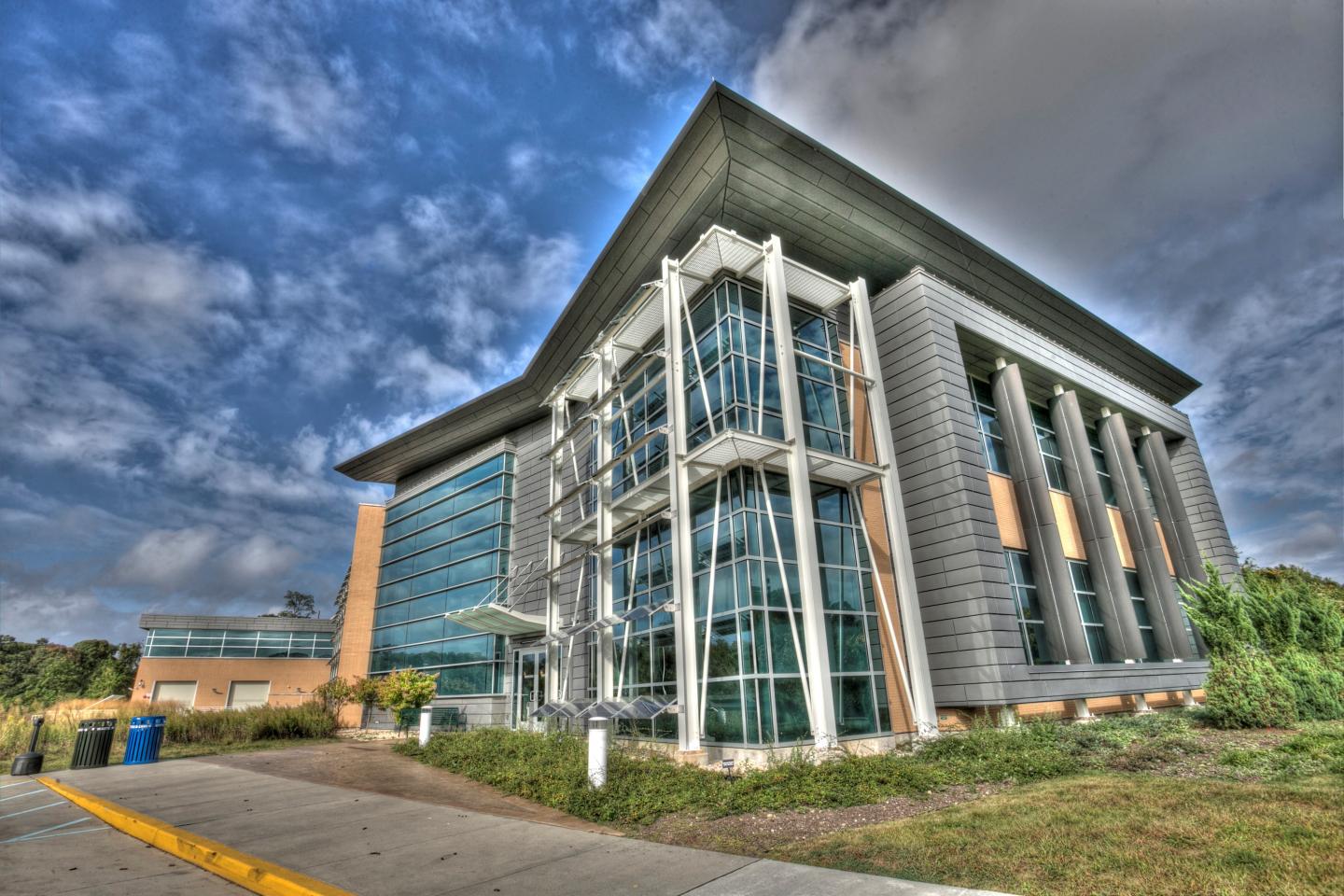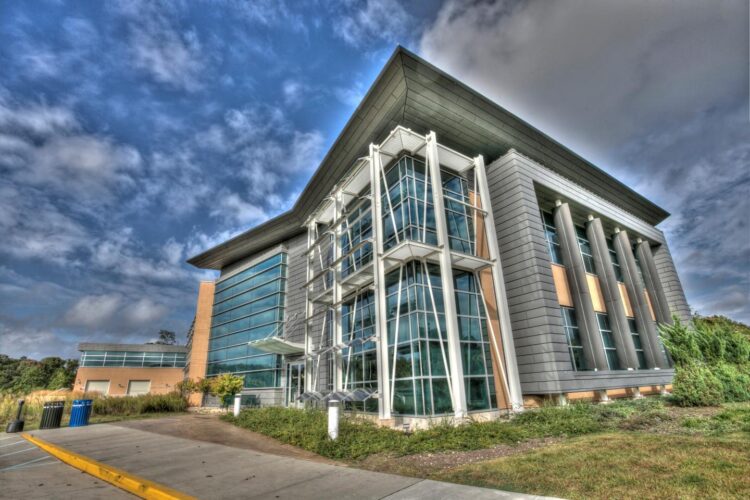Research into energy storage, grid control, among projects supported by $7.36M U.S. Navy funding to Stony Brook and UMass Lowell

Credit: Stony Brook University
STONY BROOK, NY, December 7, 2020 – Stony Brook University researchers, in collaboration with the University of Massachusetts Lowell, will be investigating ways to make energy generation, storage and system operation more efficient, reliable and resilient, particularly in microgrid settings such as shore-based environments, under a new program funded by the United States Navy Office of Naval Research. The Navy grant, totaling $7.36 million and shared equally between the two institutions, will run through the fall of 2022.
Each institution will conduct nine multidisciplinary projects to achieve the research goals, complementing each other’s efforts in areas including grid control, security and infrastructure monitoring; energy storage, materials and grid management; and zero-carbon fuels. Both will collaborate to develop new training approaches, an area in which the domain knowledge and experience of National Grid and the Long Island Power Authority will be valuable assets.
“Efficient energy is vital to the security and economic stability of our region and nation. Stony Brook University will continue to play an important role in advancing energy research innovation for our society,” says Stony Brook University President Maurie McInnis. “We are thrilled to partner with the University of Massachusetts Lowell and industry in this initiative–to together discover new ways to ensure energy resiliency for the future.”
“Thanks to this funding, the research expertise of faculty at UMass Lowell and Stony Brook University will be brought together to tackle challenges in energy resiliency. This important work will address needs in energy generation, storage and system operation that ensure a secure and efficient future for the nation’s energy systems,” said UMass Lowell Chancellor Jacquie Moloney.
Stony Brook’s two New York State Centers of Excellence — the Advanced Energy Research and Technology Center (AEC), and the Center of Excellence for Wireless and Information Technology (CEWIT) — will assist University researchers involved in the program. Both Centers of Excellence are funded through the Empire State Development’s Division of Science, Technology and Innovation (NYSTAR), which fosters industry R&D collaboration to promote economic growth. Utility and industry connections are also a key external resource.
Essential partners in the collaborative project include the DOE Office of Science-funded Energy Frontier Research Center for Mesoscale Transport Properties (m2m) and the New York State Center for Advanced Technology in Integrated Electric Energy Systems (CIEES) — both located in the AEC. CIEES industry partners Bren-Tronics (Commack) and Ioxus (Oneonta, NY) and AEC incubator tenant StorEn will contribute storage hardware and expertise to the initiative.
“This research program comes as the energy industry is experiencing greater technological change than at any time in the last century,” says Yacov Shamash, PhD, Principal Investigator and Professor of Electrical and Computer Engineering at Stony Brook University. “That’s why the Stony Brook and UMass Lowell projects leverage deep energy research experience with academic knowledge, and long-time institutional collaborations with utilities in their states.”
“The partnership between UMass Lowell and Stony Brook University is unique in that we bring together energy experts from both universities along with industry partners who will collaborate to advance the next generation of energy systems. The work will surely help the Navy, but advances will also spill over to domestic energy systems for the public’s benefit. From UMass Lowell, we bring to the table our decades of experience working on renewables (wind and solar), energy storage, low-carbon fuels, and cybersecurity,” said Christopher Niezrecki, PhD, Professor and Chairman of the UMass Lowell Department of Mechanical Engineering and Co-Director of the Rist Institute for Sustainability and Energy, who will lead the UMass Lowell portion of the project.
“Enhancing energy resiliency on the microgrid level is another important step to advancing energy security and efficiency,” says Robert Catell, Chair of the AEC’s Board of Advisors and former chair of National Grid USA. “The AEC, including its Board of Advisors, in collaboration with a multitude of academic and industry expertise involved in the project on Long Island and in Massachusetts, will help guide this important work.”
“The partnership between UMass Lowell and Stony Brook, our industry collaborators – including Eversource, 2Witech Solutions and Insolcorp – and the Navy, is a great example of the kind of collaborative ecosystem R&D that UMass Lowell champions. It leverages early investment in our energy research infrastructure from the Massachusetts Clean Energy Center, the Massachusetts Technology Collaborative and UMass Lowell’s Rist Institute of Sustainability and Energy to lead to a national impact on the complex challenges facing us in energy resiliency. We look forward to a long and productive partnership with Stony Brook on this and other programs,” said Julie Chen, UMass Lowell Vice Chancellor of Research and Economic Development.
“The synergies between Stony Brook and Brookhaven National Laboratory research teams are an additional strength to the work that will be conducted for this initiative,” says Stony Brook University Vice President for Research Richard Reeder, PhD. “This collaboration along with unique specialized facilities at both institutions, including the Thermomechanical and Imaging Nanoscale Characterization (ThINC) facility in the AEC and NSLS II at Brookhaven, is a vital part of innovative research in energy resiliency under the program.”
“With our partners in New England, National Grid serves more than 20 million electricity and gas customers,” says John Bruckner, President of New York National Grid. “We took part in the initial discussions of this important project with Bob Catell and his Stony Brook colleagues, we are providing our expertise and experience as it goes forward, and we are confident that all of the participants will benefit from the results as our industry continues to develop the power systems of the 21st century.”
###
About Stony Brook University:
Stony Brook University, widely regarded as a SUNY flagship, is going far beyond the expectations of today’s public universities. With more than 26,000 students, 2,700 faculty members, over 200,000 alumni, an academic medical center and 18 NCAA Division I athletic programs, it is one of only four University Center campuses in the State University of New York (SUNY) system. The University embraces its mission to provide comprehensive undergraduate, graduate, and professional education of the highest quality, and has been ranked among the top 35 public universities in the nation by U.S. News & World Report. Fostering a commitment to academic research and intellectual endeavors, Stony Brook’s membership in the Association of American Universities (AAU) places it among the top 65 research institutions in North America. The University’s distinguished faculty have earned esteemed awards such as the Nobel Prize, Pulitzer Prize, Indianapolis Prize for animal conservation, Abel Prize and the inaugural Breakthrough Prize in Mathematics. Part of the management team of Brookhaven National Laboratory of the U.S. Department of Energy, Stony Brook is one of only eight universities that has a role in running a national laboratory. Providing economic growth for neighboring communities and the wider geographic region, the University totals an impressive $7.23 billion in increased economic output on Long Island. Follow us on Facebook (https:/
Media Contact
Greg Filiano
[email protected]





